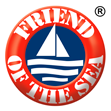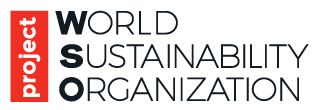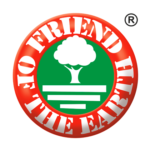Shrimp
Dimitrios I
Species scientific name: Penaeus notialis, Penaeus monodon, Penaeus kerathurus
FAO area: 34
Fishing method: bottom trawler
Asaro Matteo Cosimo Vincenzo SRL
Species scientific name: Aristaeomorpha foliacea
FAO area: 37
Fishing method: Trawler
Basic description of the fleet/fishery
Fishery client: ASARO MATTEO COSIMO VINCENZO SRL.
Fishing area: FAO Area 37, GSAs: 20, 21, 23, 26, 24 and 25.
Fishing vessels: Vessels audited on site as fleet samples: 27551; 26786.
Fishing method: Trawler.
Certified species: Scientific name / Common name
Aristaeomorpha foliacea / Giant red shrimp
Management summary
In Italy, the fishery policy is implemented through the Directorate General for Fisheries and Aquaculture of the Italian Ministry of Agriculture, Food and Forestry Policies (MIPAAF) and by the Directorate for Fisheries of the regional administrations, with the support of services provided by decentralized offices (Marine Coastal Guard). The General Fisheries Commission for the Mediterranean (GFCM) is the regional fisheries management organization (RFMO) that has the authority to adopt binding recommendations for fisheries conservation and management in its area of application and plays a critical role in fisheries governance in the region.
Stock status summary
According to GFCM, the Giant red shrimp fishing is conducted with about 800m deep, while the stock is spread to a depth of 1200m. This ensures a protected area with a homogeneous stock not fished. In addition, Stockmed project results show stock homogeneity. Based on this information, and taking into account the fishery data of the certification unit, the auditor concluded that the stock is not overfished and overexploited.
Bycatch / discards
The most common bycatch species is the Hake (Merluccius merluccius), classified as “Least Concern” in the IUCN Red list. All bycatches and discards are recorded in the logbook. The level of discards is less than 5%.
Habitat Impact
All vessels are equipped with Vessel Monitoring Systems (VMS) and the fleet complies with the rules on Marine Protected Areas. Fishing occurs from 50-70 miles from the coast and, in the case of islands, with 6 miles minimum distance. Bottom trawling is conducted in authorized areas, with a muddy seabed and at 800 meters depth, so that the impact on the seabed is considered minimal.
Social Accountability performance
The fleet complies with the human rights and Italian labour regulations.
Conclusion with reasons for approval
The fleet complies with Friend of the Sea requirements, without any major non-conformity.
Atlantic Shrimpers Ltd
Species scientific name: Penaeus monodon
FAO area: 34
Fishing method: Midwater trawl
Basic description of the fleet/fishery
Fishery client: Atlantic Shrimpers Limited
Fishing area: FAO 34
Fishing vessels: STAR SHRIMPERS XXVII, STAR SHRIMPERS XV, STAR SHRIMPERS XXV, STAR SHRIMPERS XIX, STAR SHRIMPERS X, QUEEN AMINA, STAR SHRIMPERS XX, MADAM TINUBU, STAR SHRIMPERS XXVI
Fishing method: Shrimp Trawling
Certified species: Scientific name / Common name
Penaeus monodon/ Wild tiger shrimp
Management summary
The Nigerian Institute for Oceanography and Marine Research conduct studies about shrimp fisheries.
A working group of the FAO-organized Fisheries Committee for the Eastern Central Atlantic (CECAF) convenes to assess and discuss demersal species in the CECAF south region.
The Nigerian Institute for Oceanography and Marine Research (NIOMR) conduct a continuous check to the fishery.
Stock status summary
The Nigerian Institute for Oceanography and Marine Research conduct studies about shrimp fisheries, as general precautionary advice for the costal shrimp in Nigeria, FAO recommends not providing more fishing licenses until more knowledge about their status is available.
This advice doesn’t specifically consider P. monodon’s status as an introduced species. however, and any potential control of this species will be complicated by the likely mixed-species nature of the fishery.
No assessment is known to be conducted of Nigerian coastal shrimp species (FAO, 2011).
A working group of the FAO organized fisheries Committee for the Eastern Central Atlantic asses and discuss demersal species, but data is insufficient to allow an assessment or the identification of a trend.
A preliminary evaluation of the status of Giant tiger Prawn in Nigeria water was reported by AP Marine Environmental Consultancy LTD in December 2018.
Bycatch / discards
All by-catch, and discards are recoded on the log book; trawling is prohibited within 5nm of the continental Shelf to protect the nursery ground and to reduce conflict between artisanal and industrial fisheries, and in water shallower than 18 mt. The codend should have more than 44 mm of mesh size. Trawling method always give the possibility to release live animal with a high chance of survival.
In the bycatch there are no species listed in IUCN red list.
Habitat Impact
The fishing method used by the company’s vessel is shrimp trawling, that method had no negative impact on the sea bed.
Social Accountability performance
The fleet complies with the human rights and International labor regulations.
Conclusion with reasons for approval
The fleet complies with Friend of the Sea requirements, without any major non-conformity.



